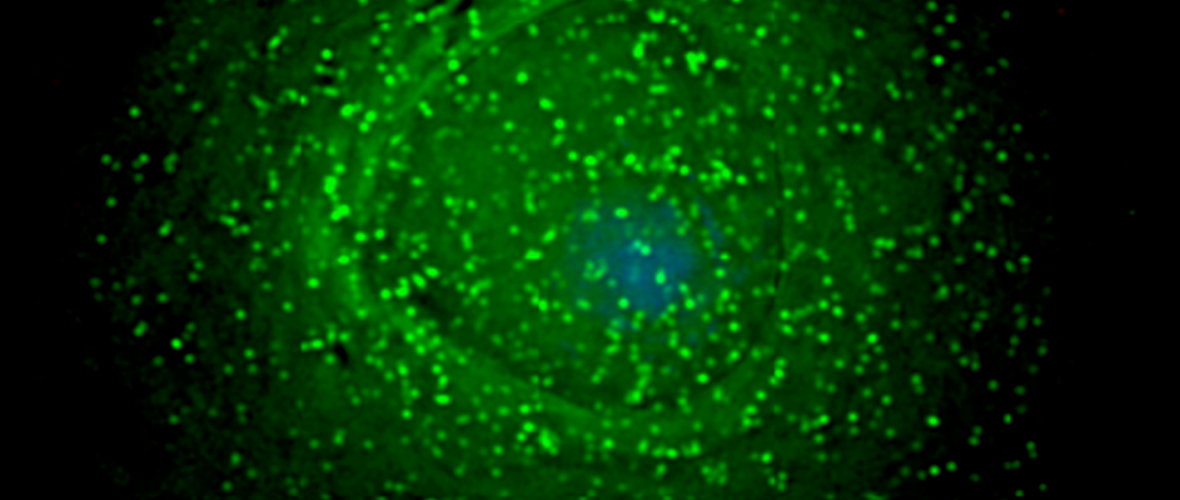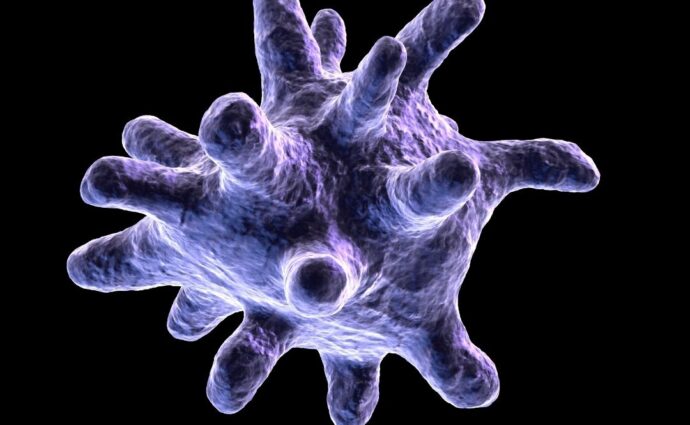Date: February 10, 2021 By:

by: Rachel Leeson. image credit: HIV on macrophages, Reconfirming the Traditional Model of HIV Particle Assembly. Gross L, PLoS Biology Vol. 4/12/2006, e445.
Most HIV-infected cells can be readily killed by immune cells, which recognize and attack infected cells that are making copies of the virus. Ragon postdoc Kiera Clayton, however, found that HIV-infected macrophages are resistant to a type of killer immune cell known as a natural killer cell, in a study recently published in Cell Host and Microbe.
This work, done under the guidance of Ragon director Bruce Walker, MD, follows another study Clayton published showing that macrophages are also resistant to a type of killer immune cells called CD8+ T cells. Together, these two studies provide important insight into how macrophages may be helping HIV infection persist in the body.
“If HIV-infected macrophages are not effectively eliminated by these so-called killer immune cells,” Walker says. “they serve as hiding places for the virus; reservoirs where the virus can re-emerge if a person with HIV stops taking their daily treatment. Eliminating such reservoirs is a major goal of HIV cure research.”
Because natural killer cells work differently than the CD8+ T cells, these results suggest that HIV-infected macrophages are generally resistant to death by killer immune cells, even if the infected macrophages are actively making new copies of the virus.
Natural killer cells can detect HIV infection by recognizing HIV proteins on the surface of an infected cell. Researchers previously thought that macrophages hid their HIV infection by keeping the virus proteins isolated to special compartments inside the cell. But Clayton, using a technology called CAR T cells, was able to show that viral protein could be seen at the surface of an infected macrophage, even though the natural killer cells did not have a strong response to the proteins.
“This means,” says Clayton, “that the macrophages themselves must be interacting with the immune cells to inhibit their killing abilities.”
Macrophages, Clayton explains, engulf and digest foreign entities and debris in the body. Since the immune system may be prone to responding to the pieces the cells pick up, macrophages may deliberately be dampening the immune killer responses that could interfere with this process. In the case of HIV, however, this job-saving trait may be actually helping to create hiding places for the virus in the body.
The team is now working on understanding exactly how the macrophages inhibit these killer cell responses. This is a more complicated project than it might seem – though this work was done in cell cultures in the lab, macrophages exist in tissues all over the body and each tissue, such as the brain, heart, lung, or gut, harbors a slightly different type of macrophage. The team hopes that understanding these different macrophages will have help guide researchers who are developing HIV cure strategies.

Researchers at the Ragon Institute, including faculty member Hernandez Moura Silva, PhD, recently published a paper in Science Immunology with significant findings regarding resident tissue macrophages (RTMs), shedding light on their multifaceted roles in organ health.

After three years off due to the COVID-19 pandemic, the Ragon-MIT course HST.434 returned this January to provide 24 students a once in a lifetime learning experience

Ragon core member and MIT associate professor of chemical engineering Brandon DeKosky, PhD, was one of five MIT faculty members recently awarded $25 million to take on Cancer Grand Challenges.